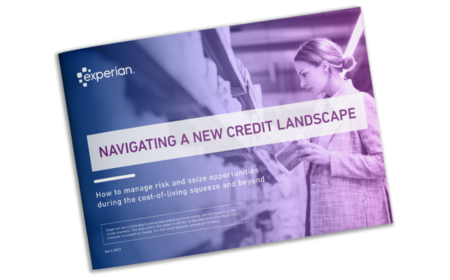In this new landscape, well-worn indicators of consumer stress – such as unemployment – are no longer the best predictors of ability to pay. Instead, the focus has shifted to understanding real disposable income.
Lenders who can understand the nuances and complexity in granular detail to determine risk and spot growth opportunities will be the winners in this new landscape.
Risks and opportunities in 2022 and beyond
2022’s predicted drop in real-terms disposable income is 2% – is set to be the highest since World War II. But this average masks the significant variation in impact on affordability for individuals.
Experian research shows that the squeeze will create highly uneven pressures amongst consumers. Where someone lives, the industry sector in which they work, and the nature of their job will be critical in deciding whether they can afford credit.
There are as many risk profiles as there are consumers. A uniquely large number of factors are shaping affordability in the new landscape:
- A real rate of inflation that varies widely for different consumers – reaching 15% for some
- Big differences between the richest and the poorest in the percentage of discretionary income they are set to lose – with the poorest hit hardest: we have identified 7.5 million customers who face acute affordability challenges
- Big differences in the strength of recovery between employment sectors and geographical regions
In short, the risk picture is complex and fast-changing.
How to succeed in the new landscape
The credit market has recovered well from lockdown measures: all sectors except personal loans have recovered to pre-Covid new business volumes, and the UK economy is strong despite the ravages of the pandemic. However, we can now see the first signs of stress appearing amongst consumers:
- Current-account balances are falling
- Overdraft use is rising
- Credit-card balances are rising
- Collections cases rose 7% between December 2021 and February 2022
- Disposable income is shrinking
Navigating this new risk landscape requires bold thinking and new tools. What is needed now are not stress indicators based on broad categories – like employment – but real-time tracking of income, expenditure, and affordability.

How can you manage risk and seize opportunities during the cost-of-living squeeze and beyond?
Read our guide nowOrganisations that succeed will be those that can proactively monitor and support customers to mitigate the risks and identify the opportunities. Organisations need to:
- Continuously monitor the emerging risks across their portfolio as the impact of the cost-of-living crunch plays out
- Create enhanced view of affordability with additional models and data to gain a more accurate view of today – and likely future impact of the crunch on people’s credit worthiness.
- Conduct portfolio assessments and stress tests with many more variables and indicators or predictors of risk. These should include factors at the macro, regional, household and account level
- Understand the cost-of-living impact on capital adequacy, contingent risk, and the overall health of lending portfolios
- See the changing picture in granular detail and in real-time to monitor changes in consumer behaviour and spot opportunities for growth
These lenders will not respond to the squeeze and future economic shocks with blanket policies that cut off lines of credit wholesale. Instead, they’ll use powerful new data tools to understand the unique and changing risk presented by each customer.
Spotting growth opportunities with data tools
With that insight, lenders can manage portfolio risks in a nuanced and profitable way, as well as identify and seize valuable new lending opportunities.
This means using a much more comprehensive range of data for risk modelling, based not on backwards-looking averages but on up-to-the-minute individual realities that reveal the truth about risk.
These new data sources include account level-economic indicators, updated ONS expenditure, bureau-based current account balance insight, as well as Open Banking bank transaction analysis and automated sharing of payroll data to inform changes to an individual’s expenditure, employment, and disposable income.
Insight derived from this data can then be turned into actions that deliver clear value: strategy and policy changes that control risk while allowing growth; meaningful and effective early intervention when vulnerability is spotted; and optimised credit decision-making. A confident understanding of affordability risk will allow lenders to protect consumers and thrive through the cost-of-living squeeze – and beyond.
